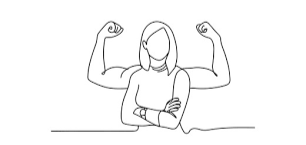Emotional Clarity and Journaling
Introduction
In today’s fast-paced world, every woman is constantly juggling multiple roles and responsibilities. Her mind remains filled with thoughts, emotions, and worries, yet the things that matter most to her — the true “me-time” moments — often take a back seat.
As she keeps prioritizing family, work, and social responsibilities, stress, anxiety, guilt, frustration, and self-doubt quietly begin to accumulate. Eventually, this emotional load reaches a breaking point and results in overwhelm or emotional burnout.
The Role of Journaling
Journaling acts as a safe home for your inner voice — a space where your emotions can breathe freely. It works like self-therapy, helping you organize emotional clutter and bring clarity to your thoughts.
What Is Journaling?
Journaling is simply the act of writing down or sketching your thoughts, feelings, and internal experiences — without rules, judgment, or expectations. You can write on paper or digitally, whatever feels natural.
By expressing yourself honestly, you untangle the knots inside your mind. This honesty leads to insights, clarity, and deeper understanding of what’s truly happening within you.
How Journaling Brings Emotional Clarity
When you put your inner world onto paper, you stop your emotions from piling up. It’s similar to cleaning your home — just as a tidy space calms the mind, journaling clears emotional clutter.
This clarity helps you:
- Calm down
- Understand situations better
- Make healthier decisions
- Respond instead of reacting
A clear mind becomes stronger, balanced, and more emotionally stable.
Emotional Benefits of Journaling
A journal is your private world — free from responsibilities and expectations. It allows you to prioritize yourself for a change.
Journaling helps with:
- Reduced Stress & Anxiety
Writing releases emotional pressure and helps untangle overwhelming thoughts. - Increased Self-Awareness
You understand your triggers, patterns, strengths, and needs. - Enhanced Self-Compassion
You learn to treat yourself with patience and kindness. - Boosted Self-Confidence
Clarity brings courage, and courage builds confidence.
Types of Journaling to Explore
1. Gratitude Journal
Write down a few things you feel grateful for every day.
This shifts your focus from what’s missing to what’s working, creating peace, positivity, and motivation.
2. Emotional Release Journal
Write freely and without editing or judgment.
This helps release stored emotions, stress, and inner pressure.
3. Reflection Journal
A reflective diary where you ask yourself meaningful questions such as:
- What made me happy today?
- What lesson did I learn this week?
This builds self-awareness and self-growth. The only rule here is honesty with yourself.
4. Goal & Growth Journal
Like a written vision board — a place to note your dreams, goals, and progress.
It keeps you motivated and aligned on your path to success.
5. Affirmation Journal
Write positive, empowering statements that help rewire your mindset toward resilience and self-belief.
How to Start Journaling
You don’t need perfect words or a perfect notebook. Just start.
- Write without fear or hesitation
- Don’t worry about grammar
- Let your feelings flow naturally
- Spend just a few quiet minutes daily
- If you feel stuck, draw a flower, a doodle, or write a quote you love
Consistency, even for five minutes a day, can reduce stress and improve emotional balance.
Journaling as a Tool for Healing
Journaling is a gentle conversation with yourself.
When you write down your pain, confusion, or emotional weight, you release it from within.
This process helps you feel calmer, aware, compassionate, and emotionally stronger.
How Journaling Builds a Growth Mindset
Emotional clarity creates space for growth.
With regular reflection, your challenges begin to look like opportunities.
Failures turn into lessons, and struggles shape resilience — ultimately helping you develop long-term emotional strength.
Conclusion
Journaling nurtures a deeper relationship with yourself. It offers the much-needed pause in life, allowing you to slow down, breathe, and understand yourself better.
Every word you write becomes a step toward emotional clarity, self-awareness, and inner peace.
You reconnect with the “you” that is calm, strong, compassionate, and resilient — the real you.





